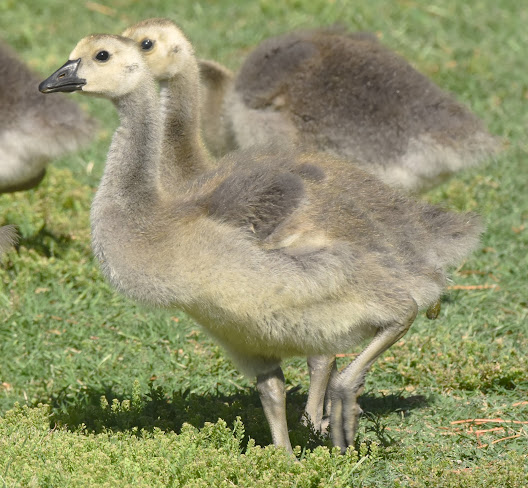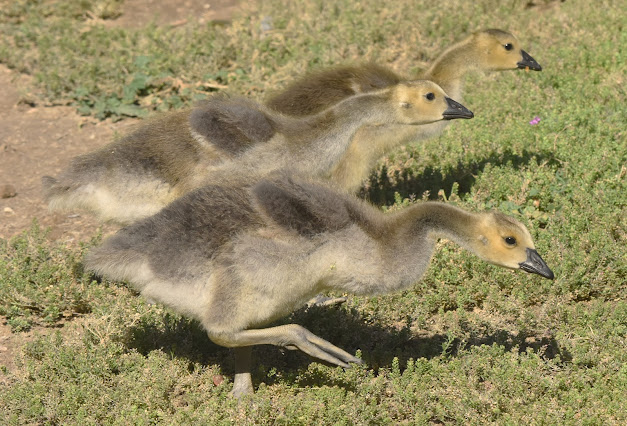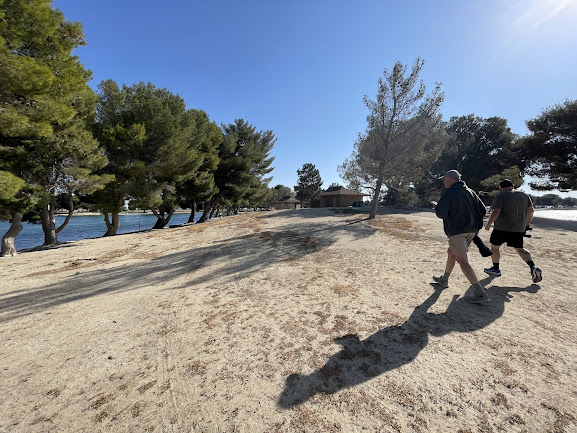A Wild Goose Chase
A text from our birding friend Jon appeared on our phones, "Tundra bean goose is an easy chase and has been hanging around a local park for several weeks."
When I was last in LA several months ago, I had thought about it but it was at the water treatment plant. The goose at the time could be seen with a scope off the highway. I passed. It's a 6+ hour drive from Tucson, AZ to Lancaster, CA. The idea of doing it alone was irresponsible and just exhausting. We reduced our carbon print and went together to find this lifer. It also cut our costs down. The whole trek to see this bird was a little over a hundred bucks. If it was there.....
It's always a gamble. Will it BE there? The drive seemed longer going there. The hot desert heat eventually cooled down as we entered the overcast San Bernadino Valley. We stayed overnight there for an early morning start. Gordon was the driver. Jon and I both were the coordinators and navigators while en route to Lancaster. Once we got to Lancaster, there was NOTHING in the way of green around us except this little square green park next to a loud airport. It reminded me of the episode from Star Trek: The Next Generation's 3rd season episode "The Survivors" where only 2 people survive on this planet and live on this little green habitable patch. See pic above for the "the feel".
This is the actual green space provided for the community.
This is outskirts of the park. Great for Bell's Sparrows. And we had plenty.
Once inside the park though, it feels like a forest of make believe.
We drove through yellow and brown sage brush territory until we arrived at this green space. We got out of the car and just stretched our legs. Oh that drive. And there were geese everywhere...Snow Geese, Canada Geese, domestic Swan Geese and a couple domestic Greater white-fronted Geese. But where was the Tundra bean goose?
While we were searching the 3 very large ponds in this forest of pine trees, I had to stop and look at this little gosling. We saw why the park was so popular with residents.
We ran into a birder from Santa Barbara. I had so many questions for this local birder. Geese can make messy ID's for people. If you're not from around the area, and we weren't, it's good to ask questions. We wanted to have accuracy on our reporting for ebird. What geese were wild? vs which ones were domestic? Snow and Canada were okay. Greater white-fronted and Swan were not. Perfect. Gordon entered all of those not wild as domestic geese species on ebird. Swan Geese are not countable in the US. And the Greater white-fronted looked a little hybridish. I could see why the Tundra bean goose chose this park. It apparently flew from the nearby WTP to Apollo Park to be around the other geese.
We were distracted by beautiful type 2 Red Crossbills in the park. It was a shocker and treat to witness this male crossbill feeding 2 younger birds. It's also very telling what a green space in the middle of nowhere can do for birds. Normally these crossbills would be up in the nearby mountains, but this park is now home to a small group of these birds.
It was nice and cool here. But there were 3 things we needed to watch out for....
1. Goose $h!t
2. Getting too close to the goslings or vice versa
3. And mud! I failed on this one.
Then I heard Gordon say, "I found it!" We moved.
It was associating itself with other Canada Geese. You'd think it would be easy to find but with hundreds of geese in this park, it was like a needle in a haystack. Until it wasn't.
This goose, in its' natural range, breeds in northern Siberia. I'll admit that it's quite low for the usual rare Tundra bean goose appearances in the US. Most rare Tundra bean geese show up in Oregon, Washington and into Canada. Recently, there was a random one that showed up in Iowa. Their story is a bit different from ours except for that loooong drive:)
How do these Eurasian birds show up in California or along the Pacific coast? During migration around Russia and Alaska, birds like cranes, pipits, geese, wagtails, etc get mixed up in flocks of North American migrating birds. And vice versa. It explains why you'll see a Common Crane occasionally show up with thousands of Sandhill Cranes. Geese are no different. This Tundra bean goose probably got mixed up with some Canada Geese, or other geese species, and moved south with them. It's not usual for this species to make it down this far south, but it checks the lifer box and one rare bird from California drive we do every year.
I think Gordon stepped in something
More adventures to come next month. June has been a grueling month of work as I transition into my new job. I am looking forward to my next great adventure in July. Join me, won't you?


















Hola Profe!! It's Enrique/ Emilio. Class of 2022. It's awesome that you found a new teaching job. Leaving ironwood was good for me and I'm sure will be for you too. I finished my first year of college at UA. I want to become a doctor so I'm continuing that endeavor. I still hang out with Brian (Cesar). I have a gf now who is from Japan. She is a very sweet girl and likes adventures like I do. I'm working for the bureau of land management this summer as a Forester (wildland firefighter). We just got done working for the San Carlos Apache tribe and will be heading back to base in Elko Nevada. Protecting those sage grouse (dodo birds) . We've been on 5 fires and I enjoy it. The crew is awesome but crazy too. I'm sure I'll see you out and about in Tucson one day.
ReplyDeleteHello Enrique!!! So good to hear from you! We will bump into each other. I'm proud of you. Keep doing the amazing work! You're making a difference for so many people. You've got great things ahead of you but you are doing great things now. Thanks for checking in!
Delete